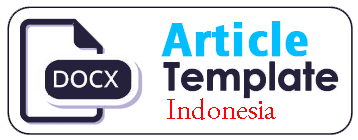Transformation of population mobility control policy on the eid holiday during the COVID-19 pandemic
DOI:
https://doi.org/10.54849/monas.v5i1.107Keywords:
policy, mobility, population, COVID-19 pandemicAbstract
The COVID-19 pandemic has caused governments in various countries in the world to issue various policies to limit the movement of population mobility to break the chain of the spread of the coronavirus. The policies for restricting population mobility include lockdown, social distancing, self-isolation, travel restrictions, border shutdowns, flight restrictions, and other restrictive policies. This study aims to explain the transformation of population mobility restriction policies during the Eid holiday in the era of the COVID-19 pandemic in the 2020-2022 period in Jakarta. The method used to answer this research is through literature studies and policy implementation in the field. The results of this study show that for three years there has been a transformation of population mobility restriction policies during the Eid holiday season. In the first year of the COVID-19 pandemic, Government 2020 imposed a Large-Scale Social Restrictions (PSBB) policy, prohibited homecoming, eliminates the free homecoming policy, and implemented an Exit Permit (SIKM). In the second year, the government implemented the Implementation of Micro Community Activity Restrictions (PPKM), prohibited homecoming, blocked 100 points in Jakarta and implemented SIKM. By 2022, vaccination achievements will already cover most of the population. The realization of the dose 1 vaccine reached 124.2% and the dose 2 vaccine reached 105.8% in Jakarta. Therefore, in the 3rd year of the pandemic, the government implemented PPKM Level 1, eliminated the SIKM policy, allowed homecoming, and held a free homecoming program.
Downloads
Published
Issue
Section
License
Authors who publish in this journal agree to the following terms:
- Authors retain copyright and grant the journal right of first publication with the work simultaneously licensed under a Creative Commons Attribution-NonCommercial-ShareAlike 4.0 International License that allows others to share the work with an acknowledgement of the work's authorship and initial publication in this journal.
- The journal allows the authors to hold the copyright without restrictions and to retain publishing rights without restrictions.
- Authors can enter into separate, additional contractual arrangements for the non-exclusive distribution of the journal's published version of the work (e.g., post it to an institutional repository or publish it in a book), with an acknowledgement of its initial publication in this journal.







